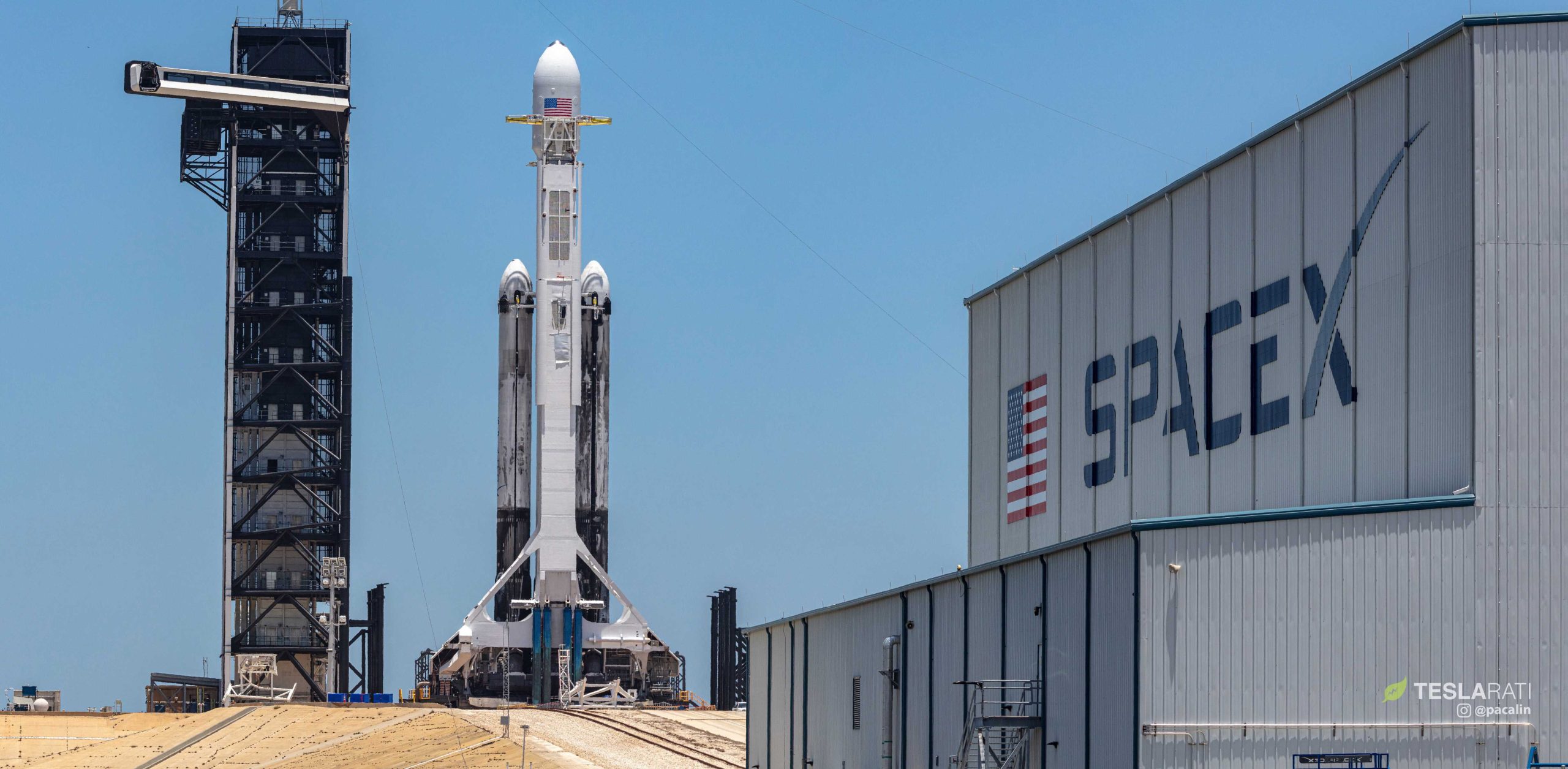
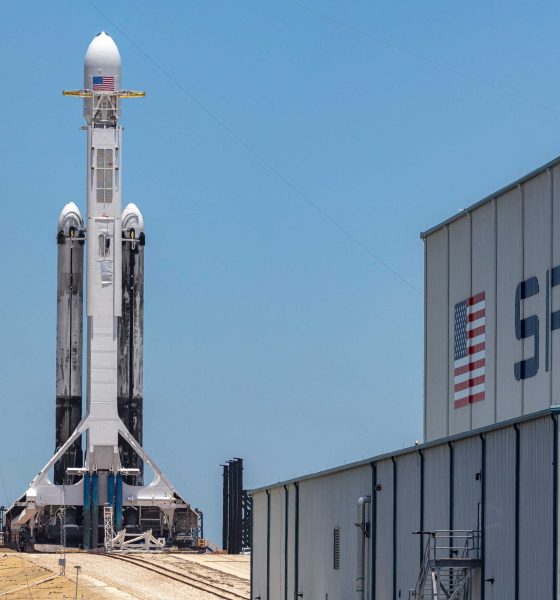
News
SpaceX's Falcon rockets might need a giant tower on wheels for US military launches
SpaceX reportedly plans to build a massive mobile gantry – effectively a tower on wheels – at one of its two Florida launch pads, a bid to meet obscure military launch criteria needed to secure highly lucrative Falcon 9 and Falcon Heavy launch contracts from the US government.
Although this is not the first time that SpaceX and vertical integration have been thrown around in the same sentence, it is the first time that the company is reportedly close to actually finalizing its plans along those lines and constructing a real solution at one or more of its three orbital-class launch pads.
Throughout the entirety of its active launch operations, SpaceX has relied exclusively on horizontal integration for its Falcon 1, 9, and Heavy rockets and the satellites they launch. CEO Elon Musk and other executives have maintained a consistent rationale for that preference over the years: ensuring that rockets and payloads can be horizontally integrated is the best possible solution so long as SpaceX’s primary motivation is improving access to space and lowering the cost of launch. As such, SpaceX has one and only one major motivation to jerry-rig a vertical integration solution for its Falcon family of rockets: necessity by way of arcane US military launch contract requirements.
Spaceflight Now broke the latest news first on January 3rd, 2020, revealing that SpaceX was at long last taking a substantial step towards actually building its own vertical integration infrastructure at Kennedy Space Center (KSC) Launch Complex 39A – a step that was long anticipated but has taken years to transpire into anything concrete. The gist is this: for a variety of seemingly shoehorned and far-from-obvious reasons, the secretive, ultra-expensive spy satellites that contractors like Lockheed Martin and Boeing build for the US Air Force (USAF) and the National Reconnaissance Office (NRO) builds itself are designed in such a way that they apparently cannot be flipped horizontally in a rocket’s payload fairing.
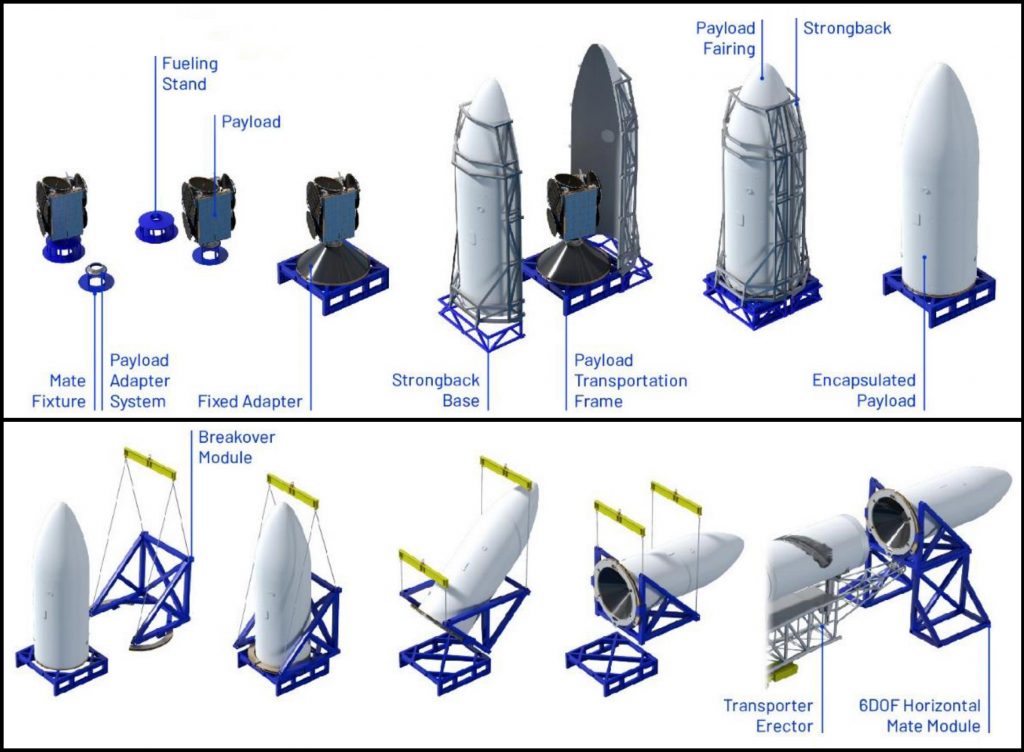
Identical to the process depicted above for Blue Origin’s in-development New Glenn rocket, up to now, SpaceX has encapsulated all satellite payloads vertically, sealed the payload fairing, rotated that integrated fairing and payload, and then attached that assembly to horizontal Falcon 9 and Falcon Heavy rockets. The rocket is then transported to the launch pad on a transporter erector (T/E), which – as the name suggests – raises the rocket and payload vertical before propellant loading and launch.
For certain USAF and NRO launch contracts, breakover (horizontal flip) is unacceptable and their preference is that the launch vehicle be brought vertical before the payload – also still vertical – is stacked on top. While it sounds simple in principle (i.e. “Just stick a crane out by the pad!”), vertical payload integration is exceptionally tedious unless you already have the infrastructure in place. Competitor United Launch Alliance (ULA), for example, already has that infrastructure – having held a decade-long monopoly over US military launches that only ended 5-7 years ago, depending on how it’s measured.
Both ULA’s Atlas V, Delta IV, and soon-to-be Vulcan Centaur rockets and the infrastructure used to launch them have all been designed around vertical payload integration – essentially requiring massive, expensive, and complicated buildings-on-wheels at each launch facility.
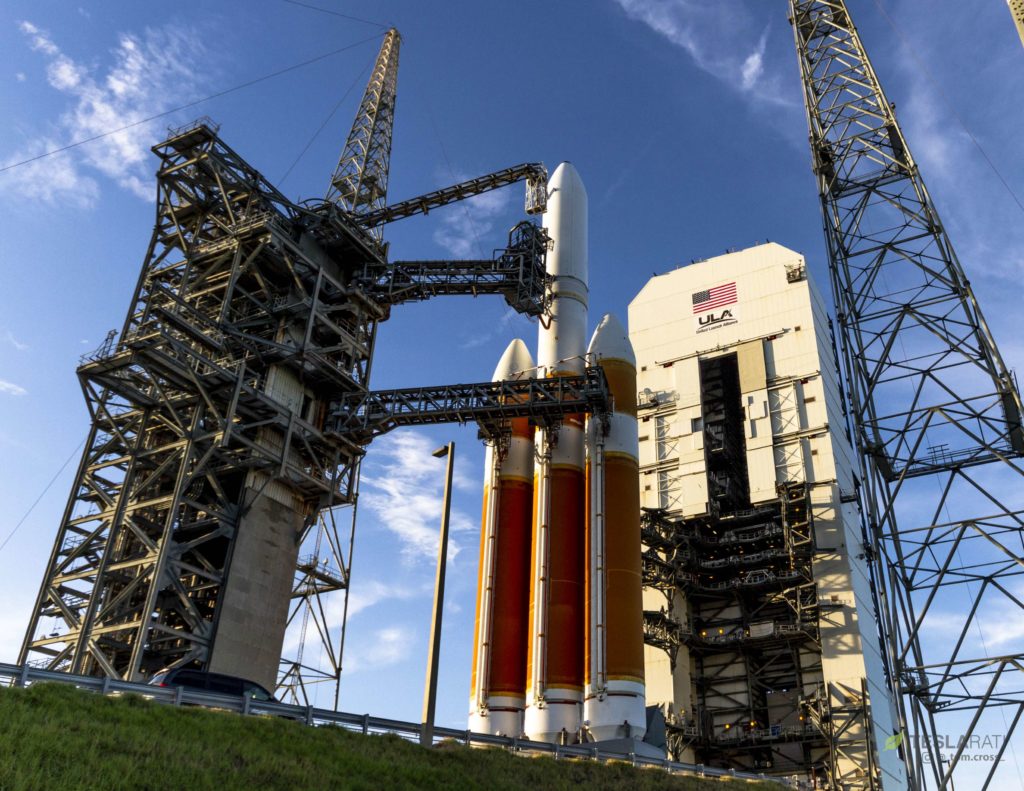
Per Spaceflight Now, SpaceX has plans to build a similar mobile tower at Pad 39A, currently dedicated Falcon 9/Crew Dragon missions for NASA and the occasional Falcon Heavy launch. That tower will ultimately roll up to Falcon 9 or Heavy rockets on the pad, fully covering the vehicles and giving technicians an array of work platforms and tools to support vertical payload integration, among other uses. SFN says that the mobile tower will be even taller than the existing Fixed Service Structure (FSS) tower at Pad 39A, measuring some 30 stories (100m/330ft) tall.
In line with a recent FSS redesign that saw that existing tower modified for Crew Dragon and outfitted with semi-transparent black glass or plastic and a black-and-white color scheme, the new mobile tower will apparently be built with a similar design language.
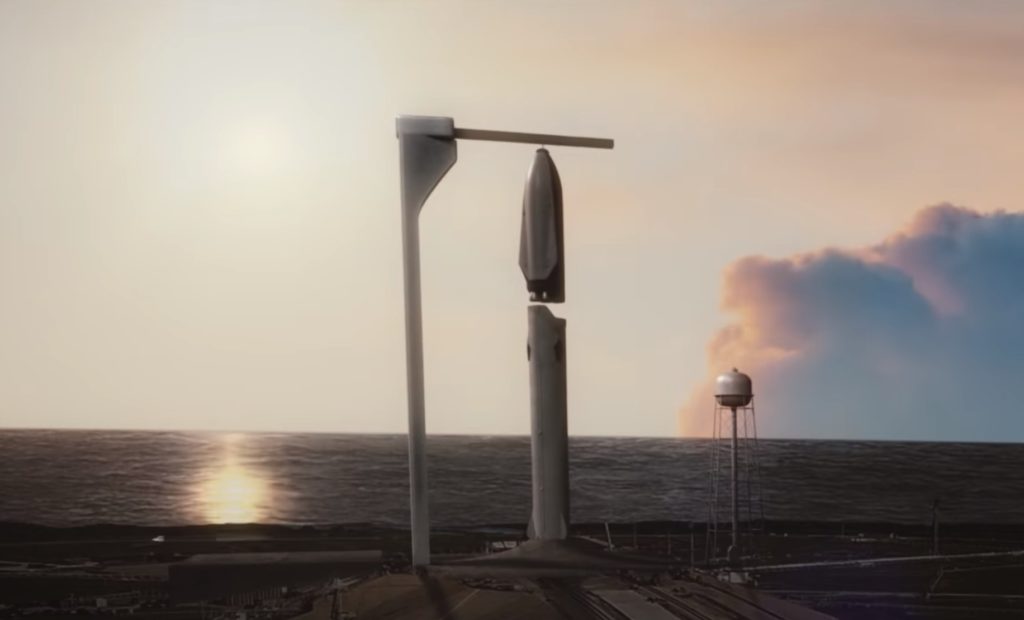
Ultimately, all of SpaceX’s plans for Starship – a massive next-generation, fully-reusable rocket – have relied on some form of vertical integration for Super Heavy boosters, Starships, and tankers. In a best-case scenario, all of those vehicles may one day land in reach of a giant crane situated at the launch pad, allowing SpaceX to lift them back to the pad and install ships and tankers on Super Heavy boosters just hours (maybe even minutes) after touchdown – truly rapid reuse.
For now, it’s unclear when exactly SpaceX wants to start cutting metal for its new Falcon 9/Heavy gantry, but it’s safe to say the company will move fast as usual once it begins.
Check out Teslarati’s Marketplace! We offer Tesla accessories, including for the Tesla Cybertruck and Tesla Model 3.

News
Man credits Grok AI with saving his life after ER missed near-ruptured appendix
The AI flagged some of the man’s symptoms and urged him to return to the ER immediately and demand a CT scan.

A 49-year-old man has stated that xAI’s Grok ended up saving his life when the large language model identified a near-ruptured appendix that his first ER visit dismissed as acid reflux.
After being sent home from the ER, the man asked Grok to analyze his symptoms. The AI flagged some of the man’s symptoms and urged him to return immediately and demand a CT scan. The scan confirmed that something far worse than acid reflux was indeed going on.
Grok spotted what a doctor missed
In a post on Reddit, u/Tykjen noted that for 24 hours straight, he had a constant “razor-blade-level” abdominal pain that forced him into a fetal position. He had no fever or visible signs. He went to the ER, where a doctor pressed his soft belly, prescribed acid blockers, and sent him home.
The acid blockers didn’t work, and the man’s pain remained intense. He then decided to open a year-long chat he had with Grok and listed every detail that he was experiencing. The AI responded quickly. “Grok immediately flagged perforated ulcer or atypical appendicitis, told me the exact red-flag pattern I was describing, and basically said “go back right now and ask for a CT,” the man wrote in his post.
He copied Grok’s reasoning, returned to the ER, and insisted on the scan. The CT scan ultimately showed an inflamed appendix on the verge of rupture. Six hours later, the appendix was out. The man said the pain has completely vanished, and he woke up laughing under anesthesia. He was discharged the next day.
How a late-night conversation with Grok got me to demand the CT scan that saved my life from a ruptured appendix (December 2025)
byu/Tykjen ingrok
AI doctors could very well be welcomed
In the replies to his Reddit post, u/Tykjen further explained that he specifically avoided telling doctors that Grok, an AI, suggested he get a CT scan. “I did not tell them on the second visit that Grok recommended the CT scan. I had to lie. I told them my sister who’s a nurse told me to ask for the scan,” the man wrote.
One commenter noted that the use of AI in medicine will likely be welcomed, stating that “If AI could take doctors’ jobs one day, I will be happy. Doctors just don’t care anymore. It’s all a paycheck.” The Redditor replied with, “Sadly yes. That is what it felt like after the first visit. And the following night could have been my last.”
Elon Musk has been very optimistic about the potential of robots like Tesla Optimus in the medical field. Provided that they are able to achieve human-level articulation in their hands, and Tesla is able to bring down their cost through mass manufacturing, the era of AI-powered medical care could very well be closer than expected.
News
Tesla expands Model 3 lineup in Europe with most affordable variant yet
The Model 3 Standard still delivers more than 300 miles of range, potentially making it an attractive option for budget-conscious buyers.

Tesla has introduced a lower-priced Model 3 variant in Europe, expanding the lineup just two months after the vehicle’s U.S. debut. The Model 3 Standard still delivers more than 300 miles (480 km) of range, potentially making it an attractive option for budget-conscious buyers.
Tesla’s pricing strategy
The Model 3 Standard arrives as Tesla contends with declining registrations in several countries across Europe, where sales have not fully offset shifting consumer preferences. Many buyers have turned to options such as Volkswagen’s ID.3 and BYD’s Atto 3, both of which have benefited from aggressive pricing.
By removing select premium finishes and features, Tesla positioned the new Model 3 Standard as an “ultra-low cost of ownership” option of its all-electric sedan. Pricing comes in at €37,970 in Germany, NOK 330,056 in Norway, and SEK 449,990 in Sweden, depending on market. This places the Model 3 Standard well below the “premium” Model 3 trim, which starts at €45,970 in Germany.
Deliveries for the Standard model are expected to begin in the first quarter of 2026, giving Tesla an entry-level foothold in a segment that’s increasingly defined by sub-€40,000 offerings.
Tesla’s affordable vehicle push
The low-cost Model 3 follows October’s launch of a similarly positioned Model Y variant, signaling a broader shift in Tesla’s product strategy. While CEO Elon Musk has moved the company toward AI-driven initiatives such as robotaxis and humanoid robots, lower-priced vehicles remain necessary to support the company’s revenue in the near term.
Reports have indicated that Tesla previously abandoned plans for an all-new $25,000 EV, with the company opting to create cheaper versions of existing platforms instead. Analysts have flagged possible cannibalization of higher-margin models, but the move aims to counter an influx of aggressively priced entrants from China and Europe, many of which sell below $30,000. With the new Model 3 Standard, Tesla is reinforcing its volume strategy in Europe’s increasingly competitive EV landscape.
News
Tesla FSD (Supervised) stuns Germany’s biggest car magazine
FSD Supervised recognized construction zones, braked early for pedestrians, and yielded politely on narrow streets.
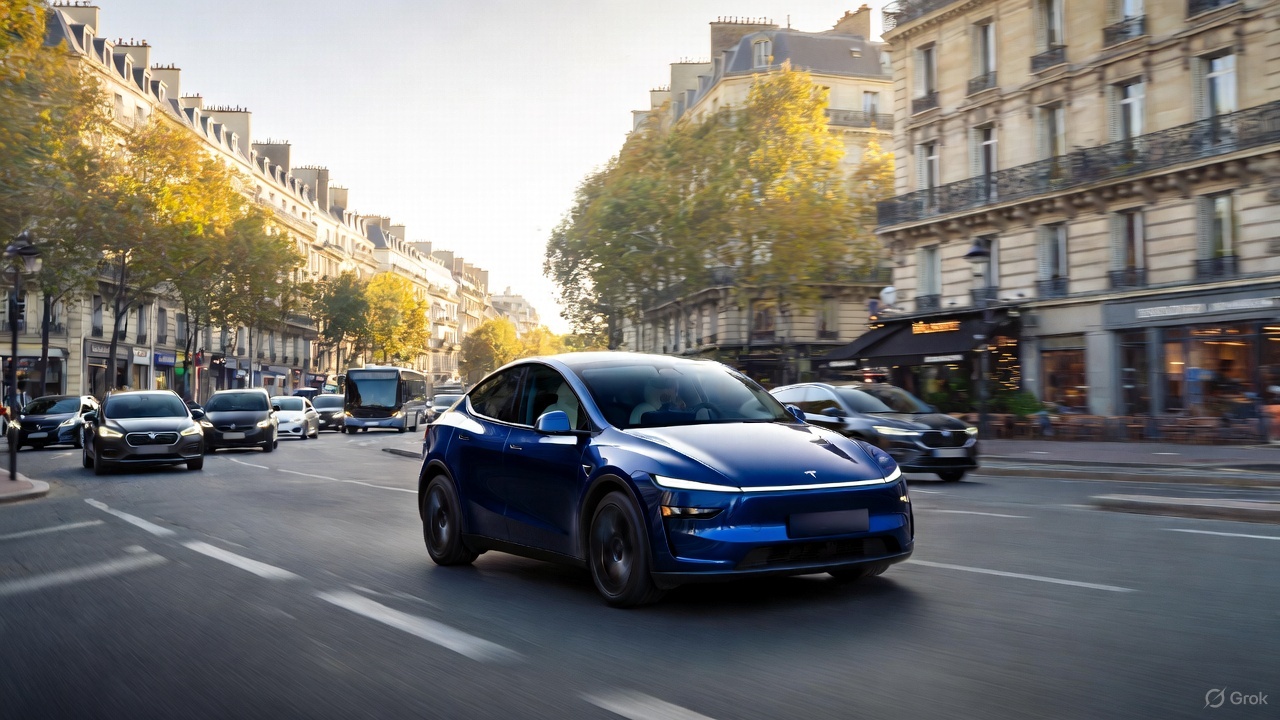
Tesla’s upcoming FSD Supervised system, set for a European debut pending regulatory approval, is showing notably refined behavior in real-world testing, including construction zones, pedestrian detection, and lane changes, as per a recent demonstration ride in Berlin.
While the system still required driver oversight, its smooth braking, steering, and decision-making illustrated how far Tesla’s driver-assistance technology has advanced ahead of a potential 2026 rollout.
FSD’s maturity in dense city driving
During the Berlin test ride with Auto Bild, Germany’s largest automotive publication, a Tesla Model 3 running FSD handled complex traffic with minimal intervention, autonomously managing braking, acceleration, steering, and overtaking up to 140 km/h. It recognized construction zones, braked early for pedestrians, and yielded politely on narrow streets.
Only one manual override was required when the system misread a converted one-way route, an example, Tesla stated, of the continuous learning baked into its vision-based architecture.
Robin Hornig of Auto Bild summed up his experience with FSD Supervised with a glowing review of the system. As per the reporter, FSD Supervised already exceeds humans with its all-around vision. “Tesla FSD Supervised sees more than I do. It doesn’t get distracted and never gets tired. I like to think I’m a good driver, but I can’t match this system’s all-around vision. It’s at its best when both work together: my experience and the Tesla’s constant attention,” the journalist wrote.
Tesla FSD in Europe
FSD Supervised is still a driver-assistance system rather than autonomous driving. Still, Auto Bild noted that Tesla’s 360-degree camera suite, constant monitoring, and high computing power mark a sizable leap from earlier iterations. Already active in the U.S., China, and several other regions, the system is currently navigating Europe’s approval pipeline. Tesla has applied for an exemption in the Netherlands, aiming to launch the feature through a free software update as early as February 2026.
What Tesla demonstrated in Berlin mirrors capabilities already common in China and the U.S., where rival automakers have rolled out hands-free or city-navigation systems. Europe, however, remains behind due to a stricter certification environment, though Tesla is currently hard at work pushing for FSD Supervised’s approval in several countries in the region.








